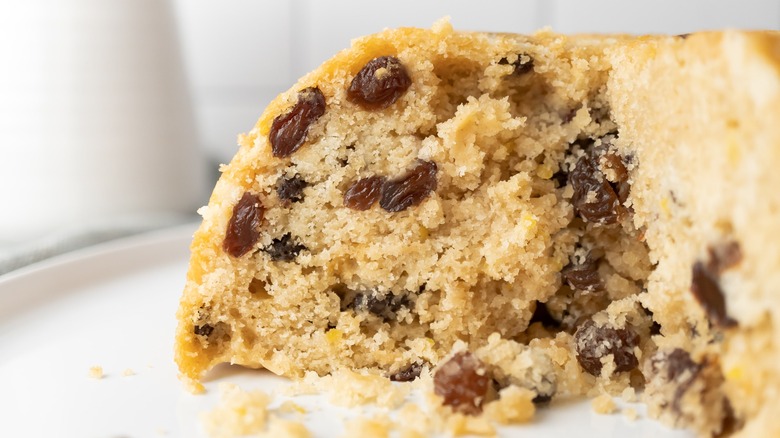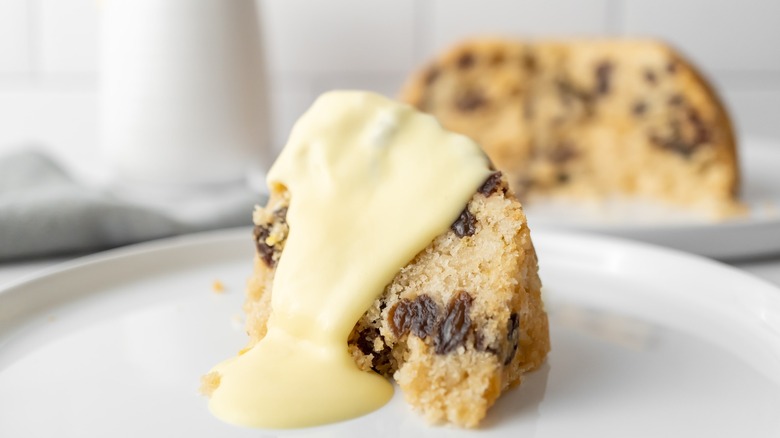What Exactly Is Spotted Dick Pudding And What Does It Taste Like?
Get your mind out of the gutter before we proceed. In the Victorian era, dick was shorthand for puddick or puddog, old English words for pudding. This isn't the kind of sweet, whippy dessert pudding you may be familiar with. Brits in the 1800s tucked into denser dishes made with suet. While some of these recipes could be sweeter to taste, many British pudding recipes steered toward bready, spongy creations that would be just lightly sweetened, with much of the flavor coming from currants, lemon, and custard toppings. Orders of spotted dick might garner chuckles from uninformed audiences, but the pudding itself has wedged its way into British culinary history.
The simple recipe to make spotted dick can be traced to the 1850s. The pudding, made up of flour, suet, milk, lemon zest, and sugar, is meant to be steamed to cook. The spotted description stems from the currants or raisins that speckle the batter. Though more traditional pudding recipes yield lighter-flavored dishes to tuck into, chefs around the world have added their own unique twists to make the dessert richer and sweeter to taste.
A pudding for all palates
Some chefs have taken liberties to enhance traditional spotted dick recipes with vanilla extract or vanilla beans and heavy cream or have swapped out the traditional suet for butter. Occasionally, other types of dried fruits other than currants have found their way into spotted dick recipes to offer regional and seasonal variations on the pudding dish. Regardless of the sweetness or fruit in the recipe, the light, spongy pudding texture is a consistent trait.
The next time you find yourself visiting the U.K. and a cheeky Brit offers you a taste of spotted dick for dessert, you'll know exactly what you're getting yourself into. Once steamed, wedges of spotted dick pudding are commonly presented with generous servings of warm custard. While you can also dress up your pudding with swirls of evaporated milk or homemade whipped cream, the playful-sounding dessert is certainly worth a try, regardless of how it is served.

